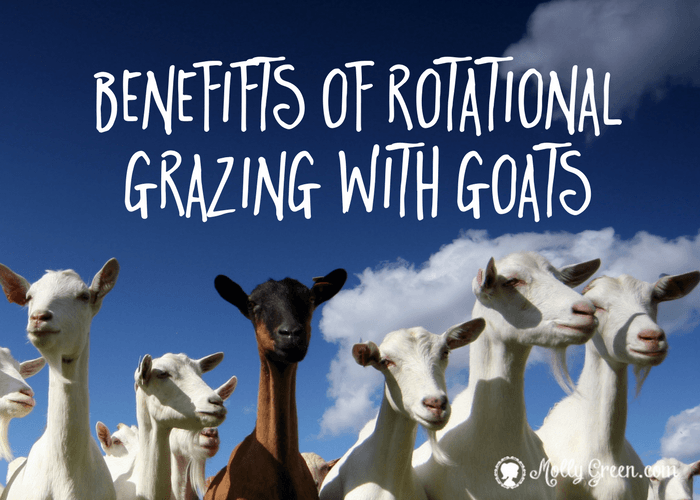
Unhealthy Goat Grazing Led to a Health Crisis
When we launched into dairy goats with our two Lamancha does, we knew nothing of rotational grazing and naively expected them to be content with our well-shaded, two-acre yard. You guessed it! By summer’s end our ladies made it clear that grass was great, but our many trees fit their browsing desires more nicely. We eventually moved them to a more brushy area and grew our herd with happy success—until about three years later when our herd’s health took a dive.
Suddenly our herd experienced severe bouts of parasites and poor health across the board. It was a frustrating time as we ran from one health crisis to another. We changed feeds, alternated between chemical and natural de-wormers, and studied the nutritional needs of goats until we were talking like vets, finding help in some, but generally circling back where we started.
Stability of Health
It wasn’t until we noticed our does did better when placed in fresh pens that an answer began to come to light. About that time, we were also introduced to author Joel Salatin and his multi-decade experiments on rotational grazing, also called “intensive grazing” by some. While Salatin didn’t cover goats specifically in his writings, we were intrigued with the health benefits he said rotational grazing made in animal health.
What did it hurt to try? The results? We’ve not looked back. We now rely on the rotational grazing—or in a goat’s case rotational browsing—as a preventive for many goat woes. It required time and a change in mindset, but the stability of our goats’ health has been well worth it.
What Is Rotational Grazing?
Rotational grazing is managing your herd in small, movable pens which are moved daily. The method follows a ruminating animal’s natural grazing habits. The needs of rotational grazing vary according to type of animal, time of year, and brush vs. grass ratio. It’s an in-depth subject; I can’t recommend enough Salatin’s Salad Bar Beef or The Stockman Grass Farmer for minds who want the deep dive on this subject. For the scope of this article, I’d like to share the rotational grazing benefits we’ve enjoyed.
Benefits We’ve Experienced with a Grazing Rotation
- It disrupts the life cycle of pathogens. This was the first advantage we experienced with rotational browsing. When animals are kept in the same browsing area long enough, they will re-infest themselves with parasites which still lurk in the soil. But with rotational browsing, you control when the herd comes back to browse, which if done properly is after the pathogens have died off.
- It creates healthier plants. Like a child, animals will always eat what is most palatable to them. With continuous grazing this means desirable plants are consumed as soon as the goat can grip it with her little teeth, which in turn does not provide time for regrowth of the plant to its fullest health or nutritional potential. As any owner of goats knows, goats will browse until all brush and grass are stripped. While this is fine if you want to expand your backyard, a goat herder will soon run out of browsing growth without the management rotational browsing provides.
- It encourages contentment among the herd. What is one of the faults goats are most notorious for? Escaping fences. Yet in many ways the drive to escape is fueled by lack of good browsing material; it’s the goat’s way of saying, “Hey, this ground is full of parasites and foul-tasting brambles. Let me out.” This is why elk, caribou, and deer never graze in the same area for long. Rotational browsing follows nature’s pattern, providing fresh ground and thus fresh contentment for the animal. Remember, brush makes the best fence for goats.
A Tremendous Blessing
Once you’ve known the headache of sickly animals, discovering a solution is a number one priority. For our family, rotational browsing has been a tremendous blessing for our herd and peace of mind for us. I’d encourage you to try it and enjoy the benefits.
Kenzi Knapp desires to proclaim the reconciliation of Mankind through the blood of Jesus Christ. A homeschool graduate currently enrolled in God’s Great Course of Faith, Kenzi lives with her family on an Ozark homestead. She enjoys writing, biking, playing the piano and mountain ocarina, studying history, and encouraging young women in Christ at her blog, Honey Rock Hills.




